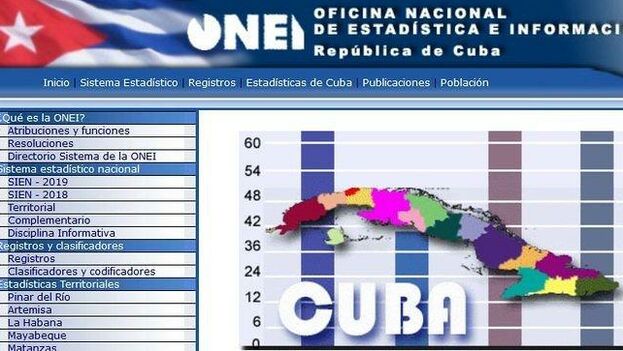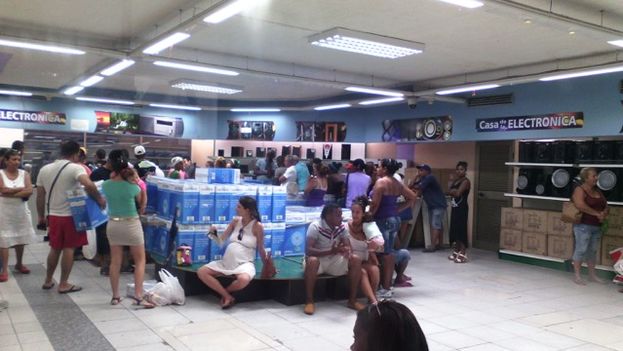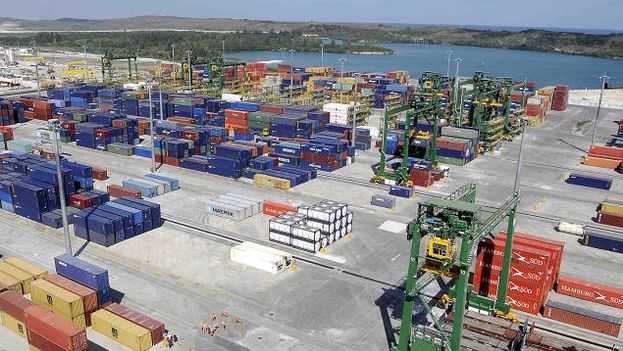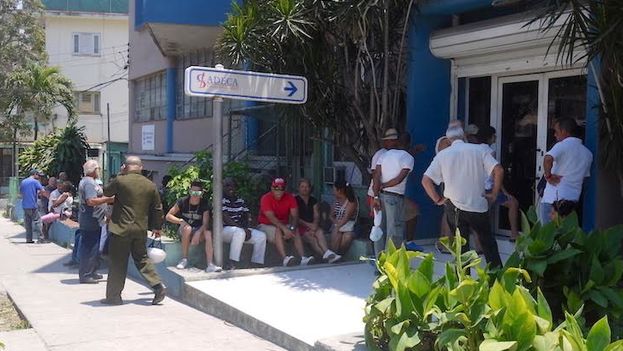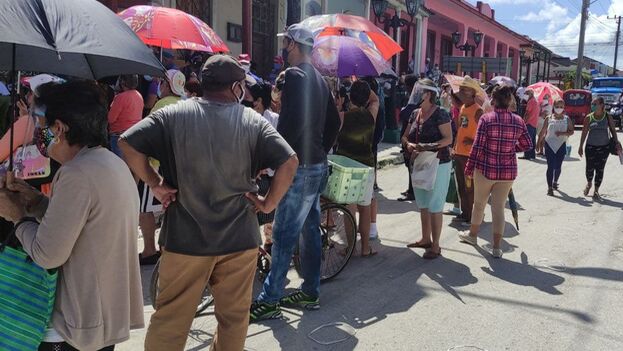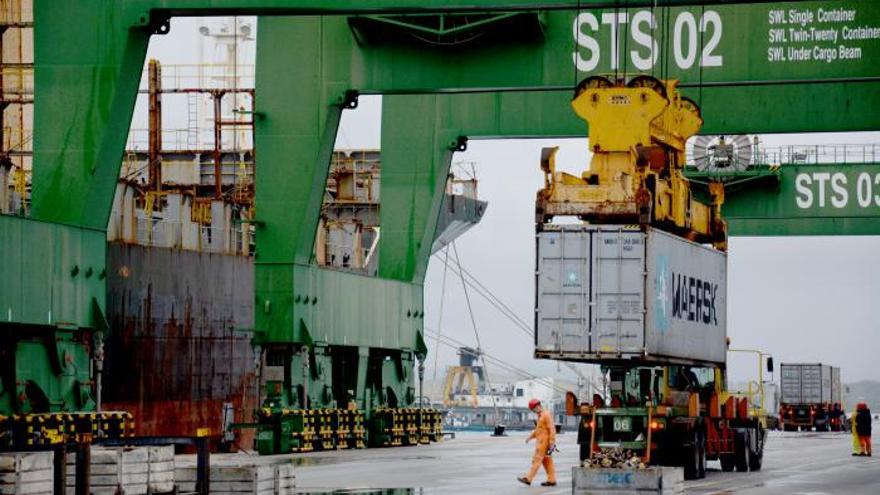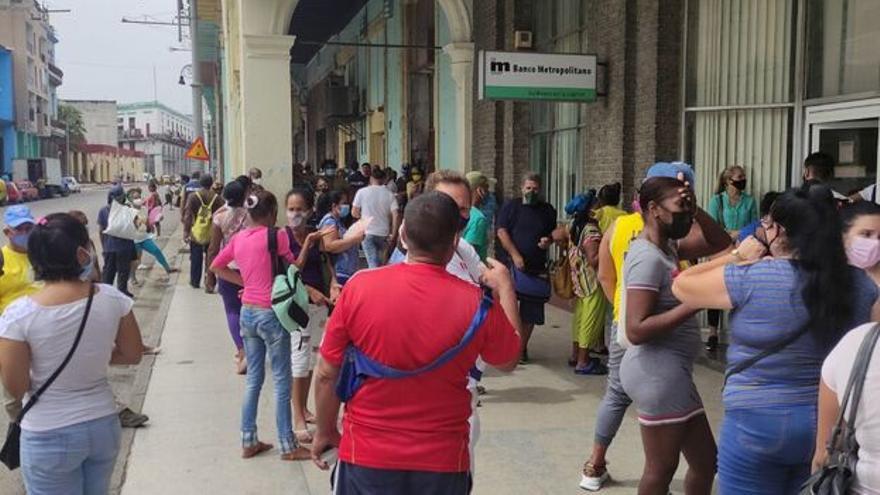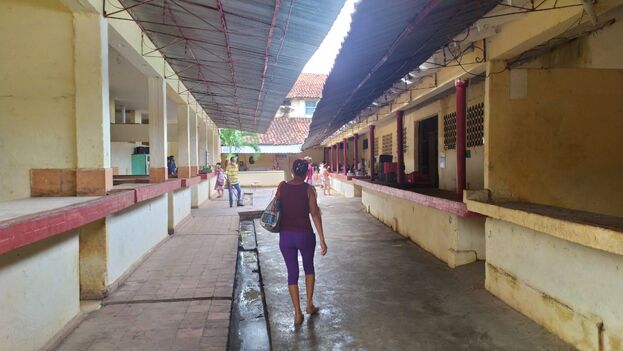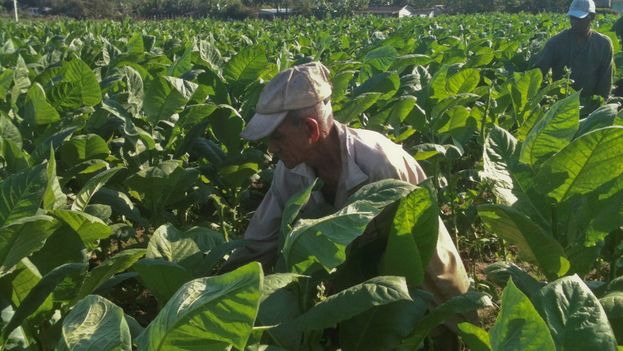
![]() 14ymedio, Elías Amor Bravo, Economist, 28 September 2022 — At the moment, there is no doubt that the most worrisome news for Cubans is the damage caused by the passage of Hurricane Ian through Pinar del Río. With its proverbial propagandist efficacy, the official newspaper Granma has referred to the consequences in the important region of Vueltabajo, where a hasty meeting of Cuban President Diaz-Canel has been held with the highest authorities.
14ymedio, Elías Amor Bravo, Economist, 28 September 2022 — At the moment, there is no doubt that the most worrisome news for Cubans is the damage caused by the passage of Hurricane Ian through Pinar del Río. With its proverbial propagandist efficacy, the official newspaper Granma has referred to the consequences in the important region of Vueltabajo, where a hasty meeting of Cuban President Diaz-Canel has been held with the highest authorities.
Apparently, Díaz-Canel must have been concerned about the state of the area and the fact that an assessment of the damage hadn’t yet been carried out and the operation of the procedures offices hadn’t been established for the allocation of resources needed for recovery. Are there no defined protocols in these situations that have to be improvised every time there is a hurricane? Why is Díaz-Canel walking around Vueltabajo when he should be in his office in Havana coordinating the aid, if any? Cubans are less and less accustomed to these propaganda exercises, and in this case they see only unexplained delays, because at the moment there is nothing that points to greater speed.
Díaz-Canel, seeing the state of the Havana-to-Pinar del Río highway, with large amounts of debris and trees on the road, pointed out the need to clear it as soon as possible, using “the communal forces,” together with those of other agencies, since it’s a strategic route for sending aid. As if “the communal forces” that have lost everything or almost everything don’t have to first deal with their own problems. How many bulldozers are needed for that job, and, above all, how many does the regime have for it? continue reading
In a snowfall scenario, the snow removal machines, pushed by tractors of private agents, arrive and solve everything with salt. Why does Díaz-Canel think that this problem can be solved by resorting once again to the inefficient collectivism of “communal forces”? Is it that in the communist regime there are no agencies in the budgeted sector that dedicate themselves to these activities in a professional way? They insist that it will be enough with several “brigades” from Havana and Mayabeque mobilized for these operations, but we are very afraid that things will go on for a long time.
On the other hand, it seems that there is a serious hygiene problem, and, therefore, to support the sanitation work, Díaz-Canel will have resources from the Revolutionary Armed Forces and the Azcuba Business Group. With all the hurricanes that have passed through Cuba in 63 years, there should be an emergency force in the army, equipped with the means and competitive training to face this type of scenario. I hope they don’t turn to the young recruits again, as in they did in the case of the recent fire at the Matanzas supertanker base.
But that said, what really mattered to Díaz-Canel was to find out what happened to the more than 33,400 tons of tobacco from previous crops that were still in the drying sheds and warehouses, and he indicated he would be visiting the main producers of the leaf in the area to provide them with support. Careful: That’s money, and, almost certainly, it’s already committed.
Tobacco continues to be one of the main products of Cuban foreign trade, and losing that harvest could be a real misfortune for the foreign currency it provides and which the regime so longs for in order to fill the state coffers. Fortunately, the hurricane has passed at a time when the tobacco production cycle is in the seed phase, although it will almost certainly have damaged the fields, which will have to be prepared again. This will entail extra costs for producers who, in the absence of private insurance or government support, will have to pay for it out of their own pockets.
Granma has recognized that Ian’s passage over the municipalities that make up the Vueltabajo tobacco massif, in which there are more than 7,900 natural (dry) curing sheds made of board and light covering, has caused serious harm to the infrastructure of the principal export of Cuban agriculture. And once again, the only thing that emerges from the news is that we will have to wait to know the extent of the economic damage.
Díaz-Canel has encountered more problems, such as the supply of water to the population and the eternal blackouts, and for this reason, he asked Granma to “raise spirits and recover again from all the building collapses.” Accompanied at the meeting of several ministers, according to Granma, he also received a detailed explanation of the actions that will be taken for an alleged return to normality in the shortest possible time.
Ian’s passage through Cuba has once again highlighted the fragility of the communist economic model that exists in the country, in the face of this manifestation of nature. No one has the slightest doubt that the traces of this hurricane will take a long time to be erased. It doesn’t occur to anyone, except Díaz-Canel, to call on “a popular mobilization to support the collection of debris, recover the organoponics and promote short-cycle crops that provide food in the shortest possible time.” The people aren’t interested in these things. He instills more discouragement with this disorder, and, above all, he should take into account the warning of Sunday’s referendum: the Cuban people have said “enough”!
Translated by Regina Anavy
____________
COLLABORATE WITH OUR WORK: The 14ymedio team is committed to practicing serious journalism that reflects Cuba’s reality in all its depth. Thank you for joining us on this long journey. We invite you to continue supporting us by becoming a member of 14ymedio now. Together we can continue transforming journalism in Cuba.

